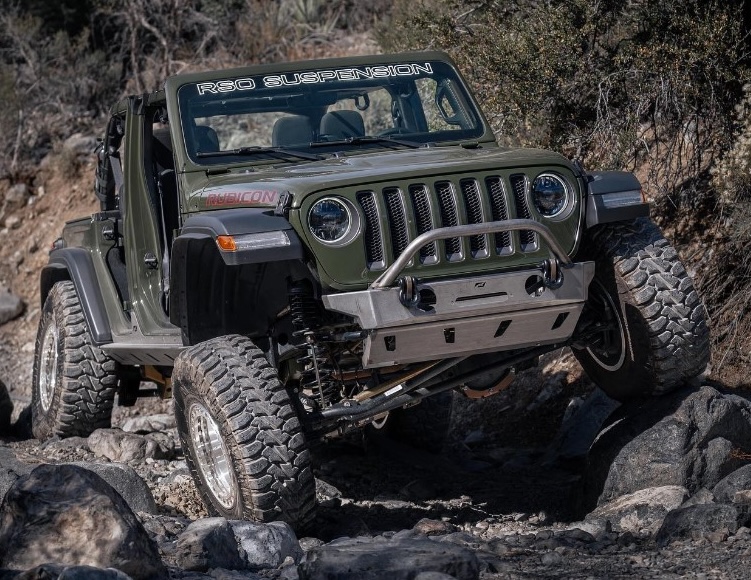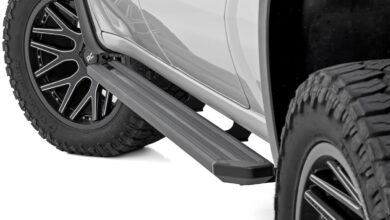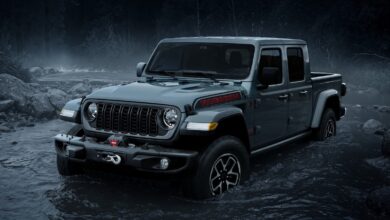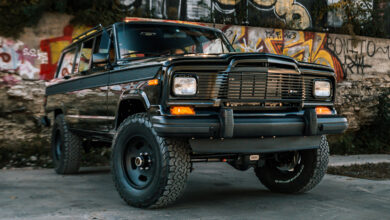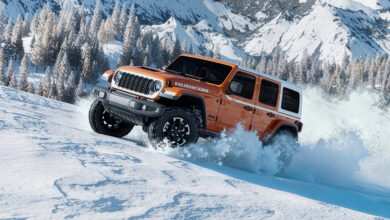Selling Lift & Leveling Kits
Truck owners are high on the latest offerings for off-road, towing & daily street use...
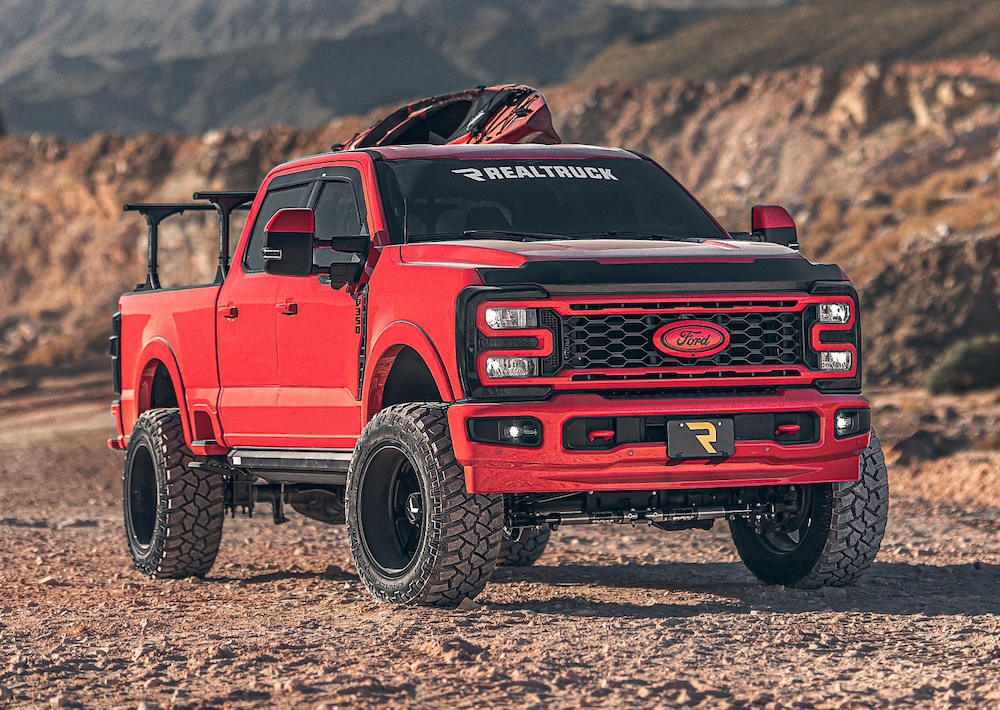
From simple leveling kits designed to help with everyday hauling to complete off-road suspensions tasked with tackling the toughest terrain, today’s lift and leveling kits cover a lot of ground.
With a wide variety of applications and kit designs to choose from, enthusiasts often turn to their local professionals for knowledge, guidance and installation services. Therefore, the more shops put into the market, the more they get out of it.
A deeper understanding reveals the opportunities provided by this popular product niche and what’s required to make the most of them. Suppliers pitch in with observations on market trends, sales approaches and updates on new products to help you and your customers level up.
HIGH & MIGHTY
The first thing to know about today’s lift and leveling kits is that customers expect them to do more than simply raise the vehicle.
“Gone are the days of just wanting a bigger truck to fit X-size tires,” says Justin Mclean, brand marketing manager for BDS Suspension/Zone Off-Road. “We now have the ability to tune these things like true performance vehicles, improving the ride quality, off-road performance and looks. Bushing, shock and spring technology, as well as improved base geometry from manufacturers, has played a big role in this.”
Enthusiasts must also navigate a crowded market, notes Sean Ting, product manager for Elite Buffer LLC, aka RubberShox.
“One of the biggest changes we have observed in the last decade is the number of options available to consumers. A consumer is concurrently bombarded with a plethora of choices in types of vehicles, different manufacturers, leveling kits and, of course, this newer emphasis on electric vehicles as well. So, to reflect this change, we offer our one-of-a-kind modular coil spring series, a single solution for a variety of needs.”
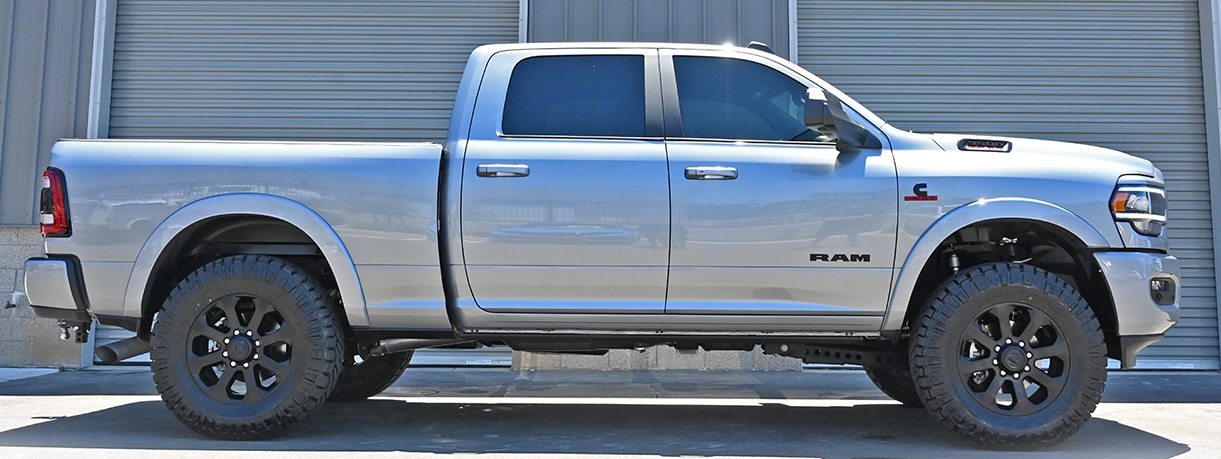
Jesse Brown, director of marketing for RSO Suspension, also sees a competitive market with established and newer brands seeking market share.
“This has pushed all manufacturers to become innovative, deliver more competitive pricing and really dial in attention to product quality to differentiate themselves from other competitors.”
Today’s high-tech factory suspensions require advanced kits and components to match, notes Mark Krumme, head of marketing, North America, for Eibach Inc.
“What once was a spacer lift is now a coil lift with proper geometry,” he says. “In our systems, we’re keeping the OE components within a safe range of operation and improving ride quality by way of the coil spring itself. We take special care to develop and test each kit to get the best balance of lift and ride quality.”
And the market is growing, he adds.
“We’re also lifting CUVs and cars. That’s been a big change.”
The top of the market is the place where quality kits can shine, says Jerry Zaiden of Camburg Engineering.
“What’s changed is consumers wanting a higher-end, more legitimate product,” he notes. “Buyers of higher-end vehicles want systems to match.”
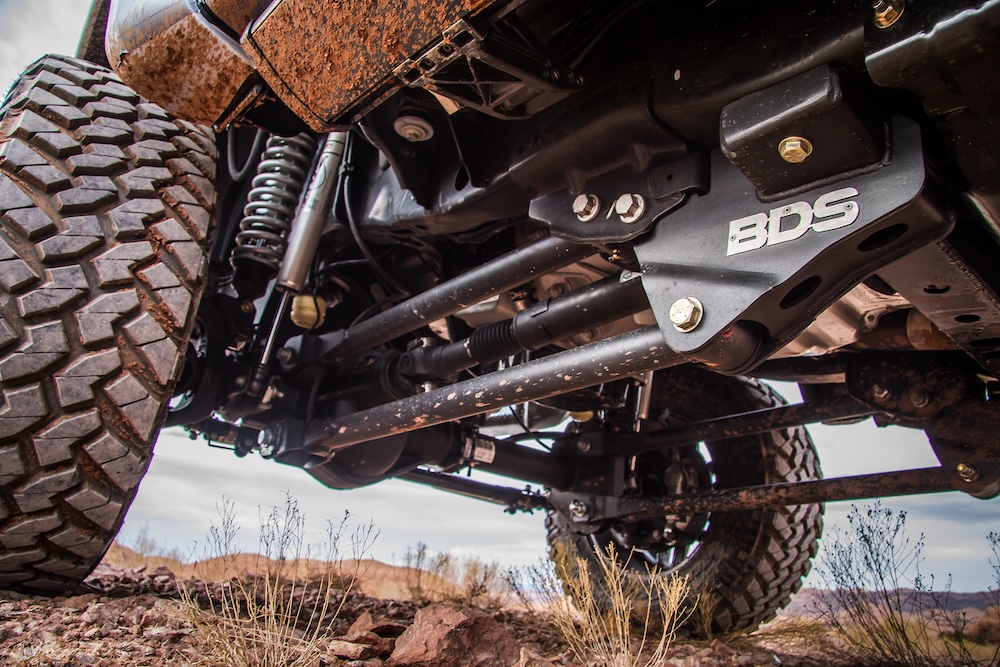
Overall, kit and component quality is continually improving, adds Dave Schlossberg, CEO of Synergy Manufacturing Inc.
“The leveling kit market has changed for the better over the past 10 years. Today, manufacturers like Synergy manufacture kits that have proprietary designed coil springs matched with specifically tuned long-travel FOX shocks. This combination not only levels the front of these vehicles but will also dramatically improve the suspension performance by adding more front wheel travel and improved dampening.”
Alex Hodschayan, director of marketing for SuperSprings International, has seen the same.
“Over the past decade the lift and leveling kit market has undergone a transformation with advancements in technology and design, leading to more sophisticated and easier-to-install kits. A notable trend has been the shift toward vehicle-specific solutions, ensuring a tailored fit and improved functionality for various makes and models.”
Mike Morris, general manager for Superlift Suspension, a RealTruck brand, sees a trend toward more moderate height increases.
“Trucks and Jeeps do not need as much lift height to clear 35- to 37-inch tires as they did in previous generations.”
And larger vehicles are now in play, says Dan Tourino, vice president of Carli Suspension.
“We’ve been along for the ride as heavy-duty diesel trucks have turned from $40,000 rugged, no-frills workhorses into polished, $100,000-plus luxury tow rigs. As the trucks have improved, so have our engineering and capability. We’re now offering semi-active suspension systems to take these refined HD trucks to the next level.”
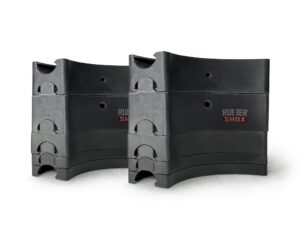
STEERED IN THE RIGHT DIRECTION
Mclean has heard buyers say they don’t need a quality system because they don’t take the vehicle off-road.
“That could not be farther from the truth, but we hear it from consumers all the time. Poor geometry and bad ride quality are not that big of a deal on a trail ride. Driving it to and from the trail or daily requires much better components, geometry and attention to detail.”
Still, drivers should expect some differences with their new suspension, says Ting.
“Raising the vehicle by a few inches will shift its center of gravity, thus affecting performance and giving an effect that is only meant for off-road use. Realistically, however, a vehicle will gain more clearance, as this will prevent tires from rubbing against fenders when turning, and heavy loads will be handled better, resulting in a more enjoyable driving experience.”
With the performance attributes delivered by quality components, the systems are about more than just looks.
“While they do enhance the appearance of the vehicle, their primary function is to improve off-road performance, towing stability and overall vehicle handling,” says Hodschayan.
And height is not always a differentiator, says Tourino.
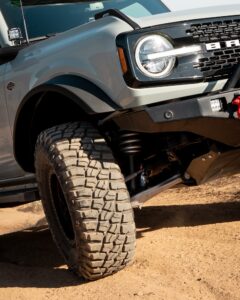
“There’s a misconception that low lifts are cheap; tall lifts are expensive. In the performance suspension world, the short lifts and taller lifts often include the same componentry of slightly different design to correct geometry at the respective lift height.”
For shops, the projects are usually fairly straightforward and repeatable, Morris notes.
“A common misconception is the install is very labor-intensive and specialized,” he says. “Most leveling and moderate-height lift kits are an easy install with excellent instructions.”
But projects must match the quality and performance drivers seek, Schlossberg says.
“There is a huge difference between kits that consist of low-tech coil spring spacers and shock relocation brackets compared to kits that consist of replacement coils and longer-travel shocks.”
Zaiden warns against shops settling for faster, easier sales when a more substantial system is required for the driver’s planned usage.
“Gain customers’ trust by installing high-end, quality suspensions,” he recommends. “This approach creates a better relationship with customers and allows the shop to sell higher-end parts. For professionals, profit is important. With quality systems, you’ll be able to charge more labor to do things correctly and make more profits on the kit itself.”
Brown suggests spending the time needed to help buyers get comfortable with their purchase.
“Consumers often don’t fully understand the differences between the different kits that are offered to them and how the kit they choose may ultimately affect their ride quality post-installation. Understanding the pros and cons of what each kit is going to deliver for them is crucial to ensuring you get the kit that will work best for your specific needs.”
Upsell opportunities then start with the important inclusion of an alignment, says Krumme.
“Just like when lowering a vehicle, when you lift a vehicle, it needs to be aligned or realigned. Upsell for the alignment itself and/or alignment parts. When a vehicle is lifted you will gain positive camber, which means burning out the outer shoulder of the tire.”
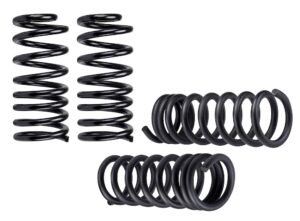
RIDING HIGH
Ready to begin offering lift and leveling kits? Not until you’ve done your homework first.
“General knowledge of suspension functionality and alignment are the keys to successful installations,” explains Morris from Superlift Suspension.
A thorough understanding of suspension systems and the specific requirements of different vehicle models is crucial, adds Hodschayan from SuperSprings International.
“Technical knowledge, attention to detail and the ability to provide customized solutions based on the customer’s needs and vehicle specifications are essential skills for professionals in this field.”
Knowledgeable team members are a must, says Brown from RSO Suspension.
“There are so many different factors to consider when dealing with suspension that you need to ensure your staff is trained to make the best decisions on behalf of your company, resulting in better customer feedback and fewer problems down the road.”
Tourino from Carli Suspension offers a three-point checklist.
“Straight axle knowledge, alignment understanding and partnerships with premium manufacturers who address all necessary components respective to the lift being installed to ensure no post-installation issues or customer gripes.”
Time factors can them come into play, depending upon the customer or project, says Ting from RubberShox.
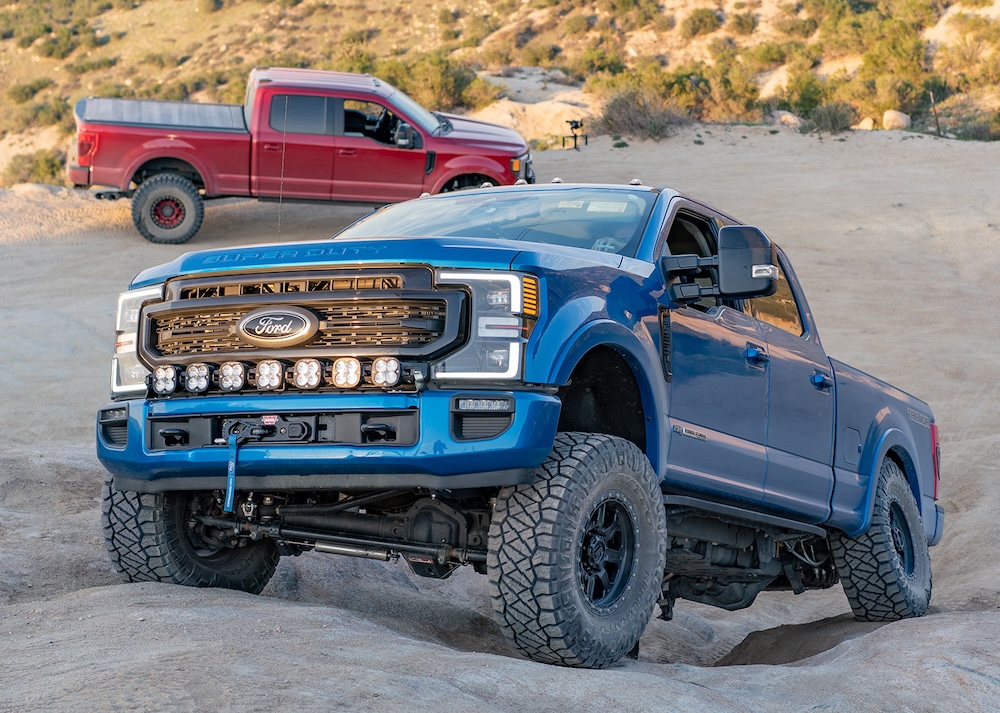
“The UCSB modular coil spring buffer offers shops a hassle-free installation process, eliminating the need to lift the vehicle or take any pre-measurements of the coil spring.”
For in-depth projects, Camburg’s Zaiden explains that off-roaders want to have full trust in the shop they visit for upgrades.
“Education is the most important thing. You want to sell them a high-quality suspension with real, high-quality, proven components that won’t come back.”
And you don’t have to stop there, says Synergy Manufacturing’s Schlossberg.
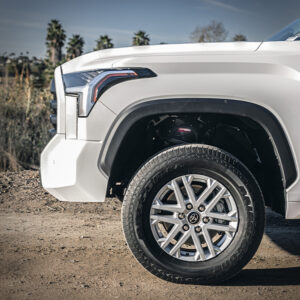
“At the time these customers are doing these kits, it’s very common to upsell additional items such as new aftermarket wheels and tires, tonneau covers, running boards and steps, auxiliary lighting, and towing accessories such as hitches,” he says.
When it comes to communicating with customers about lifts and leveling kits, it’s important to remember you’re talking about a vehicle’s total suspension performance.
“Salespeople that can really connect with a consumer about how they plan to use their vehicle and their goals for it when completed are always going to close on a better product and a happier consumer,” says Mclean from BDS Suspension/Zone Off-Road. “We find that when you are scared to lose the sale and dip the price to either a cheaper product or lesser shop rate, the success and consumer experience really fall off.”
He also suggests going out and meeting customers in real-world situations.
“Getting integrated into the local scene, especially with Jeeps, is massive for consumer traffic,” Mclean adds. “Partnering with manufacturers is also key. Speaking for us, we love working with our dealers on consumer opportunities, and education sessions always result in better overall sales.”
Finally, strong relationships with suppliers can help with kit and component selection and installation questions before mistakes are made, says Eibach’s Krumme.
“Shops will want to be communicative and not be afraid to ask questions or hop onto our portal and use the tools that we provide. We’ve taken extra time to create systems that make things faster and easier for our customers. We’d rather have the consultation with the shop prior to installation than post-installation. It helps provide the best customer experience, which builds trust and retention.”
